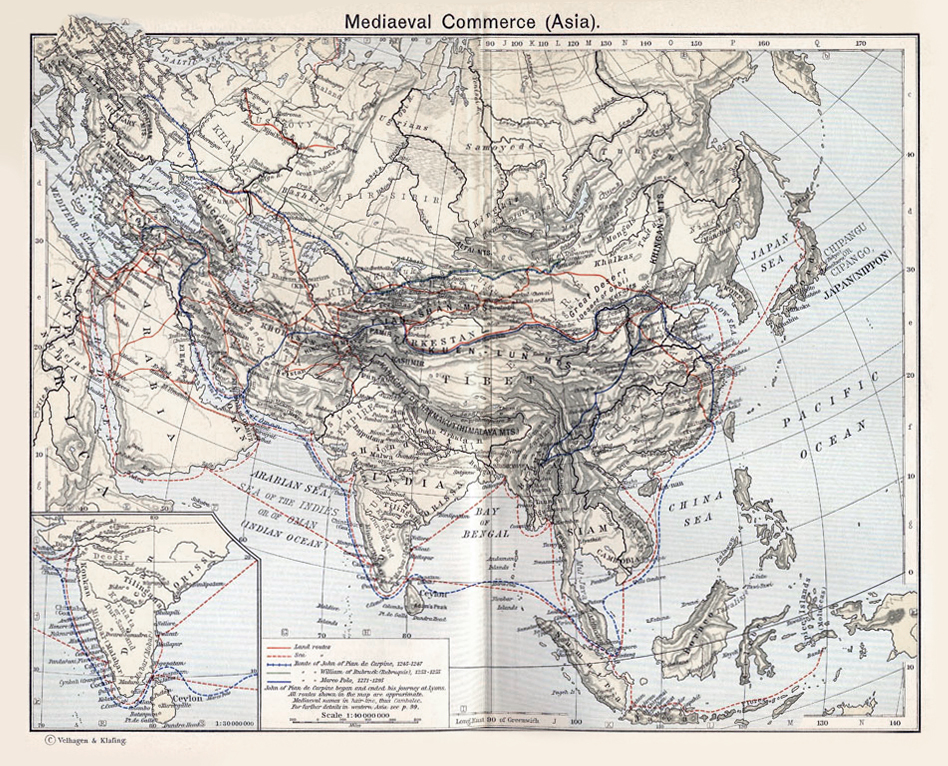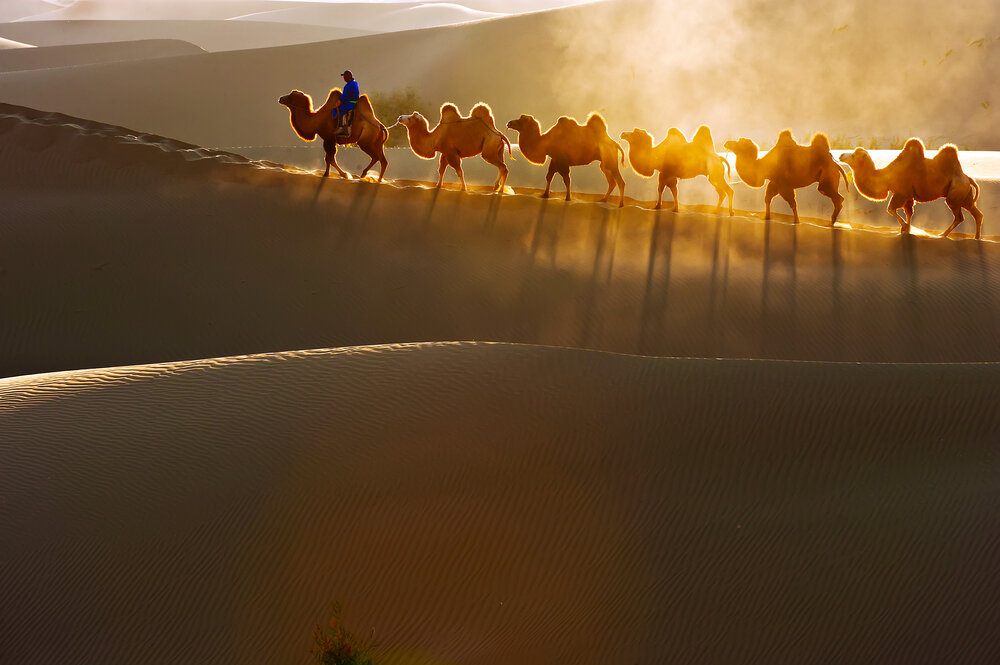Analyze
Medieval Commerce in Asia
Genre: Map | Creator: William Shepherd | Date: 1911
Background
This map of 13th-century Asian trade routes was created by the cartographer and professor of history William Shepherd for his 1911 Historical Atlas. It details the land and sea travels of John of Pian del Carpine, William of Rubruck, and Marco Polo, illustrating the path of the Silk Road from the Middle East across central Asia.

